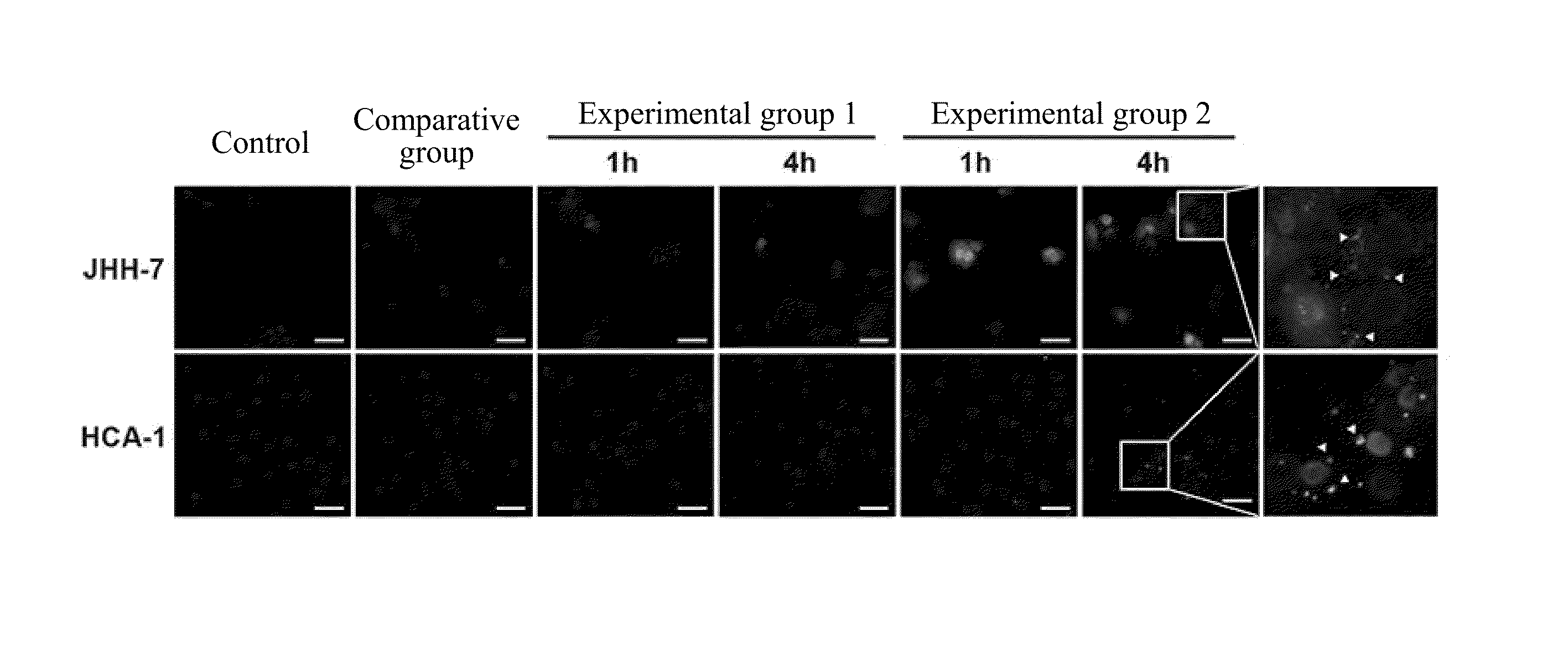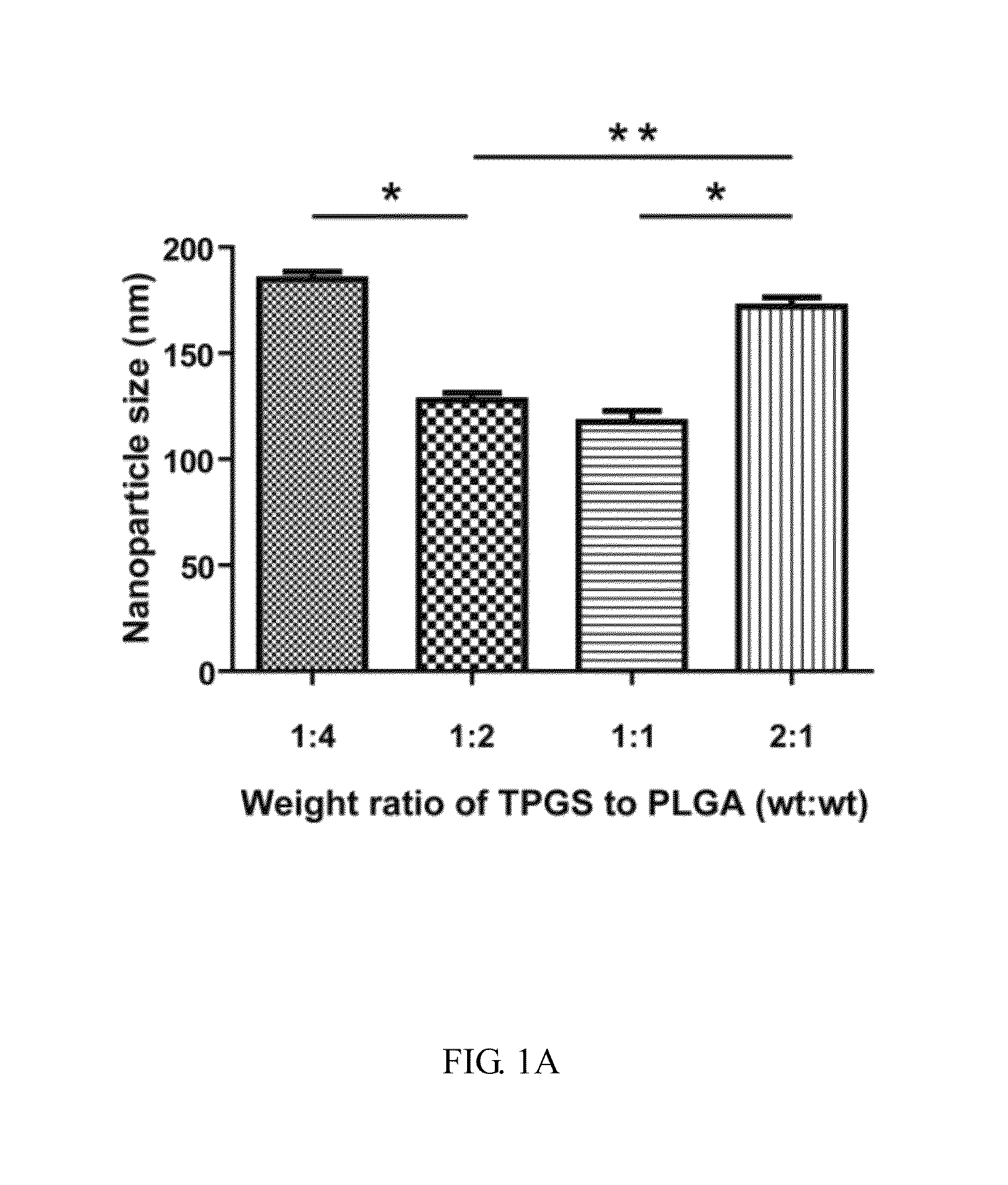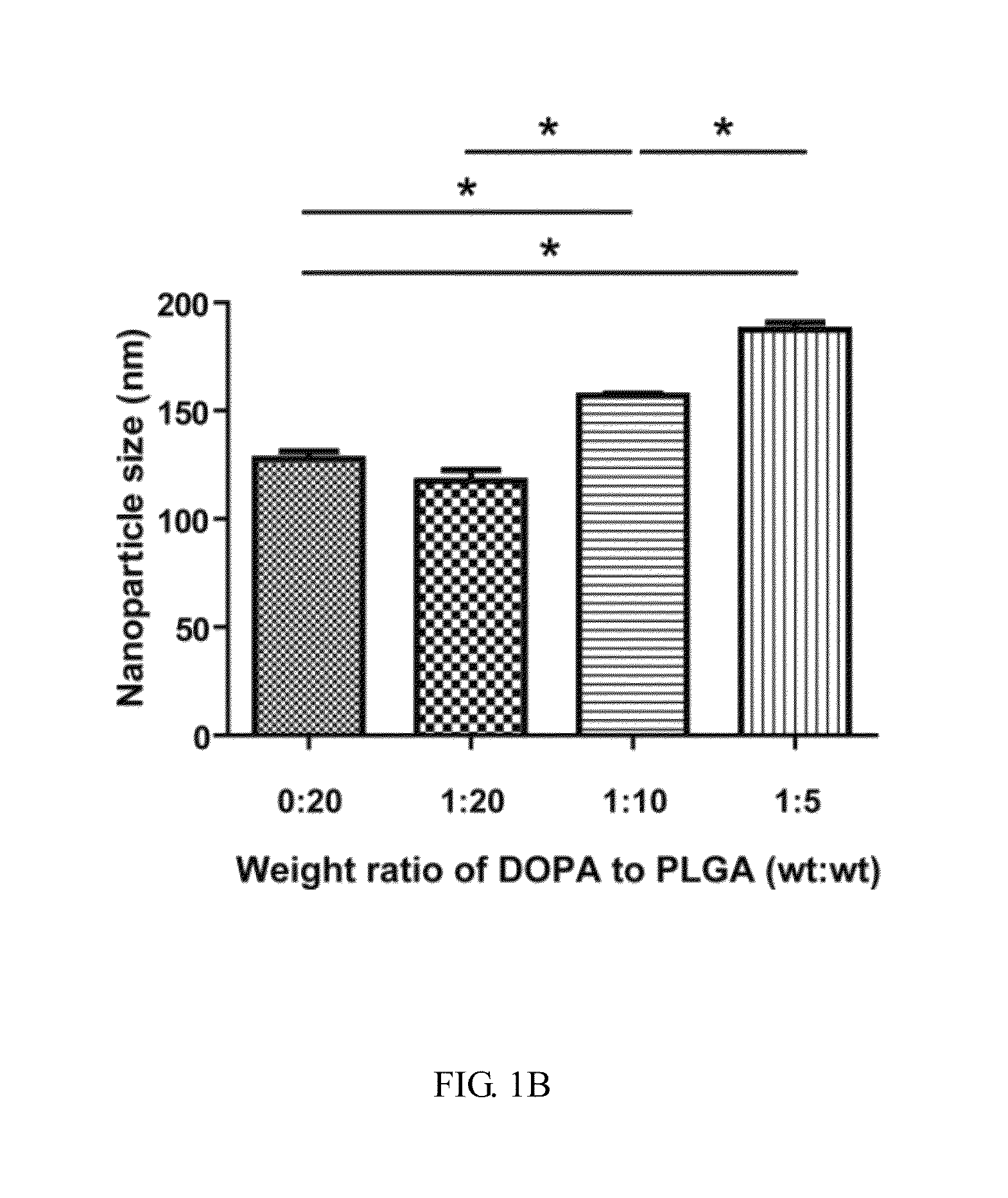Method for treatment of liver cancer and inhibition of metastasis with CXC-chemokine-receptor 4-targeted nanoparticle
a nanoparticle and chemokine receptor technology, applied in the field of nanoparticles, can solve the problems of low absorption of sorafenib in the gastrointestinal tract, hand-foot syndrome, diarrhea, hypertension, etc., and achieve the effect of enhancing the inhibitory effect of the anti-angiogenesis drug
- Summary
- Abstract
- Description
- Claims
- Application Information
AI Technical Summary
Benefits of technology
Problems solved by technology
Method used
Image
Examples
example 1
Preparation and Formulation of the Anti-Angiogenesis Drug-Loaded CXCR4-Targeted Nanoparticle
[0055]For the present invention, a sorafenib-loaded AMD3100-modified DOPA-PLGA nanoparticle was provided and such nanoparticle was synthesized via a single-step nanoprecipitation. Briefly, materials including PLGA, sorafenib, TPGS and DOPA were dissolved in DMSO as stock solutions with concentrations of 75, 30, 100 and 4 mg / mL, respectively. The weight percentage of sorafenib to PLGA was fixed at 20%. Particular amounts of PLGA, sorafenib, TPGS and DOPA in DMSO were mixed to form an oil phase. Then, the oil phase was added to the water phase dropwise under gentle stirring. The nanoparticles were allowed to self-assemble in 30 minutes with continuous stirring at room temperature. The volume of oil to water phase was fixed to the ratio of 1:7 (v / v). After stirring, the suspension was collected and added with the specific amount of AMD3100. For purification, the solution was centrifuged at 16,20...
example 2
Characterization of the Anti-Angiogenesis Drug-Loaded CXCR4-Targeted Nanoparticle
[0060]The size and morphology of ADOPSor nanoparticles of the present invention were examined by a transmission electron microscopy (TEM) (H-7500, HITACHI, from Chang Gung memorial hospital, Taoyuan). The ADOPSor nanoparticles of the present invention were firstly stained on dried carbon-stabilized Formvar-coated 200-mesh copper grids (Ted Pella, Inc., Redding, USA) at room temperature. Then, all grids were freshly dried for two days prior to imaging.
[0061]The particle size and surface charge were measured by Zetasizer (3000HS, Malvern Instruments Ltd., Worcestershire, UK) at room temperature after the nanoparticles were centrifuged twice by collecting the supernatant first and then resuspending pellet after samples underwent the high-speed centrifugation. The parameters of viscosity and refraction index were set equal to water for all samples during testing.
[0062]The geometries and size distribution of...
example 3
Preparation and Formulation of the CXCR4-Targeted Nanoparticle Encapsulating a Nucleotide Having an Anti-Angiogenic Effect
[0063]The present invention also provides a CXCR4-targeted nanoparticle encapsulating a nucleotide having an anti-angiogenic effect. Briefly, anionic liposomes composed of DOPA, DOPC and cholesterol (1:2:1 molar ratio) were prepared by thin film hydration followed by sonication (Q125, Qsonica, USA) at 50 W for 2 minutes on ice to reduce the particle size. To prepare the core of the nanoparticle, a mixture of 18 μL AMD3100 (2 mg / mL), 16 μL of protamine (2 mg / mL), 120 μL of deionized water, and 22 μL of a mixture of siRNA (12 μL, 3 mg / mL) and calf thymus DNA (10 μL, 2 mg / mL) were mixed and kept at room temperature for 5 minutes before 90 μL of anionic liposomes (20 mmol / L) were added. After mixing the anionic liposomes with the DNA-Protamine-AMD3100 cores, the mixture solution stood at room temperature for 10 minutes. Then, for attaching AMD3100 onto the nanopartic...
PUM
| Property | Measurement | Unit |
|---|---|---|
| Diameter | aaaaa | aaaaa |
| Density | aaaaa | aaaaa |
Abstract
Description
Claims
Application Information
 Login to View More
Login to View More - R&D
- Intellectual Property
- Life Sciences
- Materials
- Tech Scout
- Unparalleled Data Quality
- Higher Quality Content
- 60% Fewer Hallucinations
Browse by: Latest US Patents, China's latest patents, Technical Efficacy Thesaurus, Application Domain, Technology Topic, Popular Technical Reports.
© 2025 PatSnap. All rights reserved.Legal|Privacy policy|Modern Slavery Act Transparency Statement|Sitemap|About US| Contact US: help@patsnap.com



